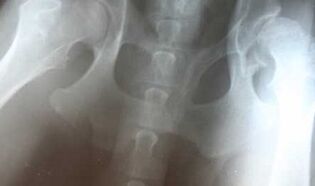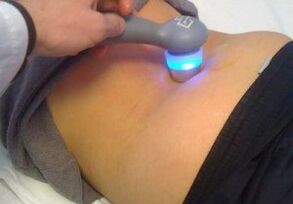
Arthrosis of the hip joint is a pathology that occupies a leading position among the various degenerative-dystrophy problems of the musculoskeletal system. There are many causes that provoke this disease, therefore, different age groups are at risk. However, it should be noted that the defeat of the hip joint occurs in middle-aged and elderly people.
Grade 1 hip arthritis is successfully treated with medication without surgical intervention. Unfortunately, however, the patient is in no hurry to see a doctor immediately, mistakenly believing that the painful sensation will go away on its own. Meanwhile, the pathological process has begun and is increasing day by day. Distinguish between primary arthrosis of the hip joint, which has an unclear etiology, and secondary arising from such diseases:
- Perthes disease;
- congenital dislocation;
- abnormal tissue development in the hip joint;
- aseptic necrosis of the femur;
- inflammatory processes;
- broken hip.
One or two hip joints may be affected. Bilateral arthrosis is not uncommon, and with unilateral pathological processes can cover the spine and knee joints.
Causes of hip joint arthrosis
- deterioration of arterial blood flow and venous outflow, due to insufficient tissue of food, there is accumulation of less oxidized metabolic products responsible for enzyme activation;
- mechanical factors that cause joint excess, for example overweight or professional sports;
- biochemical changes in cartilage, hormonal disorders, metabolic disorders;
- trauma dislocation, cervical and pelvic fractures;
- necrosis of hip bone tissue;
- inflammation of the joints, infectious processes;
- pathological changes in the spine (kyphosis, scoliosis) and flat feet;
- congenital femoral dislocation;
- congenital pathology of joint development;
- inactive lifestyle;
- hereditary tendencies (skeletal weakness, metabolic disorders, structural features of cartilage tissue).
Symptoms of hip joint arthrosis
The general symptoms of these pathological processes are distinguished, however, it should be understood that they may differ at different stages of the development of arthrosis. The main signs of a hip joint are:
- pain in the groin, hips, joints and knees, which does not subside even in a calm state;
- stiffness and stiffness;
- lemas;
- femoral muscle atrophy;
- affected limbs become shorter.
The main symptoms of hip joint arthrosis are pain, intensity and duration, as well as properties and localization that depend entirely on the characteristics of the pathological process. It is best to start treatment at the onset of the disease, when the discomfort is not so noticeable. If the right steps are not taken in a timely manner, the pain will start to increase, as a result the movement of the affected limb will be significantly restricted.
Grade 2 hip arthritis is characterized by intense pain radiating to the groin and thighs. In this case, joint function is impaired, lameness appears, internal movement and hip abduction to the side are limited. The abductor and extensor muscles lose their strength, bone growth becomes apparent on X-rays, which can stand out strongly. The femoral head is deformed, its contours are distorted, and its volume is increased. In addition, cysts can form in the most stressed joint area.
In stage 3 of the development of arthrosis, the pain becomes permanent and can interfere even at night. It becomes very difficult to walk so you have to use a special stick. At the hip joint, movement is limited, the back muscles, thighs and atrophy of the lower leg, and the leg are shortened. All of this leads to changes in walking style and increased load on the affected joint. As a result of increased bone growth, joint space is lost, and joints grow together, eventually losing its movement.
Treatment of hip joint arthrosis

If the disease is detected at an early stage, priority is given to conservative treatment methods, using a variety of medications. Patients are prescribed mainly anti-inflammatory non-steroidal anti-inflammatory drugs, which relieve swelling and inflammation perfectly, as the pain syndrome is reduced. With muscle cramps, muscle relaxants are prescribed, its action is aimed at stimulating blood circulation and relieving cramps. In addition, for arthrosis, chondroprotectors are often used - drugs that allow the recovery of thin cartilage tissue.
Do not forget about therapeutic massage methods and physiotherapy, because the effectiveness of such procedures is very high. Often, they try to treat the affected joints with various compresses, lotions and ointments prepared according to folk recipes, but all these drugs do not have the right therapeutic effect. With their help, you can only temporarily relieve pain and muscle cramps. Before treating arthrosis of the hip joint, it is very important to consult a doctor, as the use of one or another drug independently can only exacerbate an already complex condition.
Gymnastics for arthrosis of the hip joint
Gymnastics plays an important role in the treatment of this disease. Specially selected exercises for arthrosis of the hip joint prevent it from growing together and maintaining movement. When developing joint pain in this way, you need to be careful not to cause additional injury to yourself. Before doing exercise therapy and immediately afterwards, it is recommended to do a muscle massage in the affected thigh and joint area to prevent the occurrence of discomfort.
Water is an excellent helper in the treatment of arthrosis, so it is useful for patients to swim in pools, rivers or the sea. In addition, a warm water bath, where you can move your legs smoothly and slowly, will help relieve pain and reduce muscle tension. It is important not to overload the sore joints and relax as much as possible.

















































